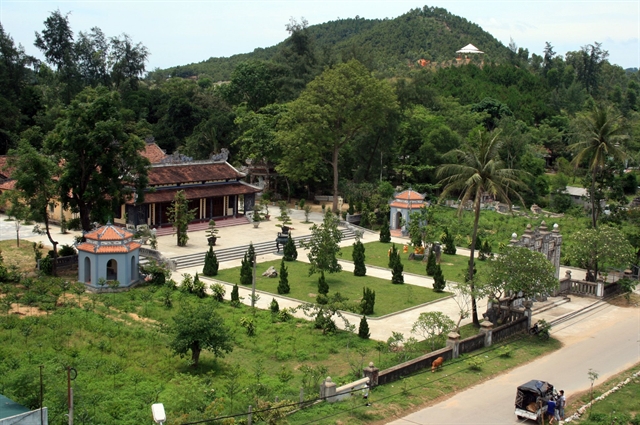
Electronics components are manufactured at the South Korean Young Poong Electronics VINA in the northerrn province of Vĩnh Phúc. VNA/VNS Photo Danh Lam
THỪA THIÊN-HUẾ -- The ongoing reconstruction of the central chamber of Quốc Ân Pagoda, which was listed among 153 buildings in need of preservation in the central province of Thừa Thiên-Huế, is causing controversy over its building permit.
To date, the pillars and concrete foundation of the central chamber have been demolished while its wooden structure, built in a typical local architectural style, was dismantled a month earlier.
According to venerable Thích Minh Chơn from Quốc An Pagoda, the central chamber of the 340-year-old pagoda will be rebuilt with a reinforced concrete foundation and wooden frame. The structure of the new building will still follow the typical architectural style of Huế - rường building, meaning a wooden structure with many beams and pillars, and two earthen tile roofs meeting at the top.
The total investment for the reconstruction is around VNĐ30 billion (US$1.3 million) and its construction plans have been licensed and assessed by the provincial Department of Construction, the monk added.
He also explained that the reconstruction of the central chamber, which was severely deteriorated due to weather conditions, was necessary when the rainy season was approaching. Its wooden structure has been damaged by woodworm while its walls have been dampened and its roof leaks.
“The monks sometimes have to use basins to hold rain water during Buddhist scripture recitation. The wooden pieces sometimes fell onto the pilgrims, which is very dangerous,” he said.
Lê Hữu Ngọc, the manager of the department of Architectural Planning, the Department of Construction of the province, admitted the reconstruction of the central chamber of Quốc An Pagoda was approved and assessed by the department on September 14, 2016. However, after two extensions, each of which lasted 12 months, the construction permit has expired.
“Only the old construction of the pagoda has been dismantled and the new one has not been constructed yet. The reconstruction of the central chamber needs new building dossier that will be re-assessed and re-approved. Otherwise, the pagoda will be inspected and fined according to law,” Ngọc said.
In the 2016 construction permit, the new central chamber would have a total area of 526.7sqare metres and height of 7.9 metres. The permit was approved by the local Department of Construction on consulting with the Committee for Religious Affairs and Department of Domestic Affairs of Thừa Thiên-Huế, but without any official document from the Department of Culture and Sports.
According to the Law of Cultural Heritage, the assessment and approval of the construction permit of Quốc Ân Pagoda, which is listed among buildings in need of preservation, requires the opinion from the Department of Culture.
“Before the Department of Construction’s approval, the Committee for Religious Affairs had organised a discussion on the issue on September 9, 2016 with the participation of relevant organisations and authorities, including the representative of the Department of Culture,” Ngọc said.
“The participants unanimously agreed on the re-construction of the central chamber of Quốc Ân Pagoda. Then the Committee for Religious Affairs transferred the documents informing the result to the Department of Construction, based on which the department issued the construction permit for the building without any official documents from the Department of Culture and Sports in 2016,” he added.
Ngọc also revealed that there are 153 buildings in need of preservation in Thừa Thiên-Huế according to the provincial People’s Committee’s decision since 1993, 32 of which have not been classified as national relics including Quốc Ân Pagoda.
The Department of Culture and Sports and the Department of Construction have recently worked to inspect and shorten the list of buildings that need preservation within the province. Quốc Ân Pagoda has been eliminated from the list together with other 71 buildings, Ngọc said.
The representative of the province’s Department of Culture and Sports said that the department is working out issuing an appropriate solution for the re-construction.
Quốc Ân Pagoda was founded by Zen Master Thích Nguyên Thiều (1648–1728), between 1682 and 1685, and was also known as Vĩnh Ân Temple. It is one of the oldest pagodas in Thừa Thiên-Huế and is renowned for preserving many ancient Buddhism cultural imprints. — VNS